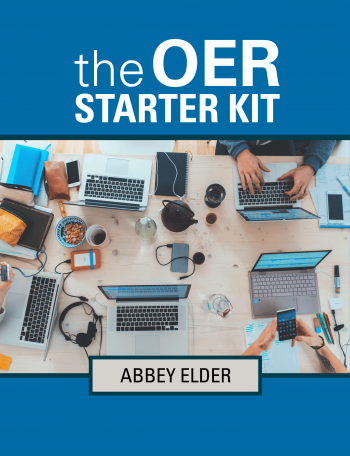
Learn more about OER with The OER Starter Kit! This starter kit has been created to provide instructors with an introduction to the use and creation of open educational resources (OER). Although some chapters contain more advanced content, the starter kit is primarily intended for users who are entirely new to Open Education.
When you're looking at options for using OER in your course, you have a few options: you can choose to adopt materials as-is, adapt materials to better meet your needs, or create new materials to share openly with other instructors. Use the following tabs to learn more about each of these options.
 Adopt
AdoptAdopting is the easiest way to implement OER in your course. Just like any other instructional material: if you like it, use it! You can locate OER available in your discipline using the resources on this guide, or by setting up a consultation with the library's OER lead.
 Adapt/Remix
Adapt/RemixIf you are unable to find an OER that meets your needs as-is, you have other options! Because OER are openly licensed, you can edit and adapt the materials to meet your needs. This can include small and larger changes.
For example, if you've found an OER that meets most of your needs but is too comprehensive for the level you teach, you can create a condensed version for your students by deleting the content you don't cover in your course.
Alternately, if there are many OER available for your course but none covers the needs of your course, you may want to consider building an "OER course pack," a selection of various OER, free online materials, and websites which make up the resources for use in a course. Like traditional course packs, these sets of materials can be extremely versatile and adaptable for different uses.
 Create
CreateIf there are no high-quality OER available on your topic or if you have course materials that you believe are superior to the OER available to you online, you may want to consider creating or licensing your own course materials. Creating OER can be as simple as openly licensing and sharing your lesson plans online, or they can be as complex as publishing a traditional textbook.
If you're interested in publishing an open textbook, you can work with the ISU Digital Press or pursue a Miller Open Education Mini-Grant to support your work:
Click on the tabs below to learn more about Open Educational Resources!
The Open Education movement is built around the 5 R's, a series of rights that instructors have over the open content they use in their classes:
This material is based on original writing by David Wiley, which was published freely under a Creative Commons Attribution 4.0 license at opencontent.org/definition
OER are openly-licensed, freely available educational resources that can be modified and redistributed by users.
| Material Type | Openly Licensed | Freely Available | Modifiable |
|---|---|---|---|
| Free Web-Based Resources Under Traditional Copyright | No | Yes | No |
| Subscription-Based Library Collections | No | Yes* | No |
| Open Access Articles & Monographs | Yes | Yes | No** |
*Library materials are free for students and faculty to access, but they are not free for the university.
**Some OA articles & monographs are able to be remixed, but authors often hold back these rights since their main concern is the free distribution of their scholarship, not its adaptation.
Open licenses like Creative Commons licenses are often used to communicate what a user can do with a resource, and what rights its author would like to retain. These licenses give others a variety of permissions, making their use or reuse of your resource a faster and more transparent process. For example, some creators may wish to share their work, but not to allow users to sell adaptations of their work.

The most common CC license is the Creative Commons Attribution license (CC BY). This license allows users to adapt and reuse content with limited restrictions. The only requirement for reusing a CC BY-licensed work is that any new work created must provide attribution to the original creator and a link to the original work.
For more information, visit our Creative Commons Library Guide.
Image credit for all graphics on this page goes to: Open SUNY Textbooks, CC BY 4.0